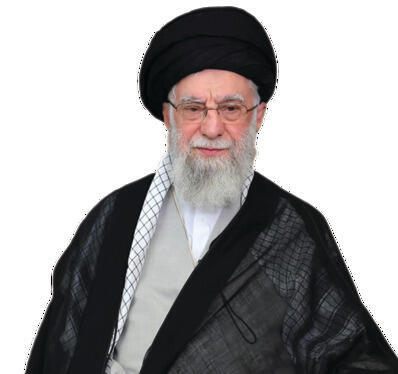All eyes across the Middle East are now focused on Israel. The Arab nations and the Islamic world are waiting to see who blinks first—whose hand will emerge dominant. Militarily, it’s clear that Israel’s most critical objective must be to disrupt and delay Iran’s nuclear program. That must be Israel’s highest military goal—inflict the gravest possible damage on that program.
Yet in this kind of war, when Iran intentionally bombards a hospital and the world watches, Israel must send a message: the ayatollahs are not untouchable. We cannot only focus on the nuclear program. With all due respect to the broadcasting building in Tehran, the people in our neighborhood must understand the message: Israel must strike the head of the snake—literally. Or, as one leading Arab journalist told me: Israel must target Iran’s spiritual leader, Ali Khamenei.
True, eliminating Khamenei would, in the short term, provoke widespread support among Iran’s Shia population. He may even attain martyr-like status. Yet he already holds the status of marja‘ al-taqlīd—the highest clerical authority in the Shia world, even though he wasn’t considered a senior cleric before replacing Khomeini. We must remember: for decades, he has dictated Iran’s policy and shaped it with masterful precision. He accelerated—and at times slowed—the nuclear program, and under his leadership Iran became a global terror power.
Since the Islamic Revolution in 1979, Tehran has been at war—not always on the battlefield but across the region—against various Sunni states, especially Saudi Arabia, but also Egypt, Jordan, the UAE and others. While Khomeini led a major conventional war with Iraq after 1979, Ali Khamenei, who took power in 1989, has waged an unofficial war on almost the entire Sunni Arab world, as well as against the U.S. and Israel.
Khamenei has turned the Middle East into Iran’s backyard, from which it wages indirect war on Israel, the U.S., and moderate Sunni states. Iran destroyed Lebanon from within, reshaped Syria and enabled Assad’s brutal survival via Hezbollah’s proxy campaign, seized large parts of Iraq through Iranian-backed militias, and drove Yemen to ruin. It continues to undermine Sunni rule in Bahrain despite that country’s Shia majority, and even exerts influence over Qatar, whose ruling family seeks to appease Iran for survival.
Get the Ynetnews app on your smartphone: Google Play: https://bit.ly/4eJ37pE | Apple App Store: https://bit.ly/3ZL7iNv
Iran declared war on the world as early as the 1980s, launching Hezbollah’s first suicide operatives against not only the IDF in southern Lebanon (1982), but also the United States—attacks on the U.S. and French Marine barracks in Beirut in 1983. It built terror cells not only in Gaza but also in South America and even Central America. U.S. intelligence has feared Iran has smuggled potential attackers across the Mexico–U.S. border. Iranian agents have even attempted assassinations of dissidents on U.S. soil. The list goes on.
Bottom line: Israel would perform a massive service to the world not only by disabling Iran’s nuclear capability but by striking the head of its terror empire—86‑year‑old Ali Khamenei. For 36 years, Khamenei has maintained the hard line, sidelined reformists, empowered radicals, crushed internal opposition, and now threatens the U.S. with irreversible consequences should it intervene.
In short, Khamenei threatens to set the Middle East ablaze if the U.S. attacks Tehran. Yet striking him—if it’s still possible—could open the door for a more rational leadership in Iran, even among reformists, one willing to negotiate with the West and halt uranium enrichment. Sure, there’s always a risk of a more extreme successor. But given the direction Iran’s hardline leadership has taken under Khamenei in recent years, that seems less likely than before.




